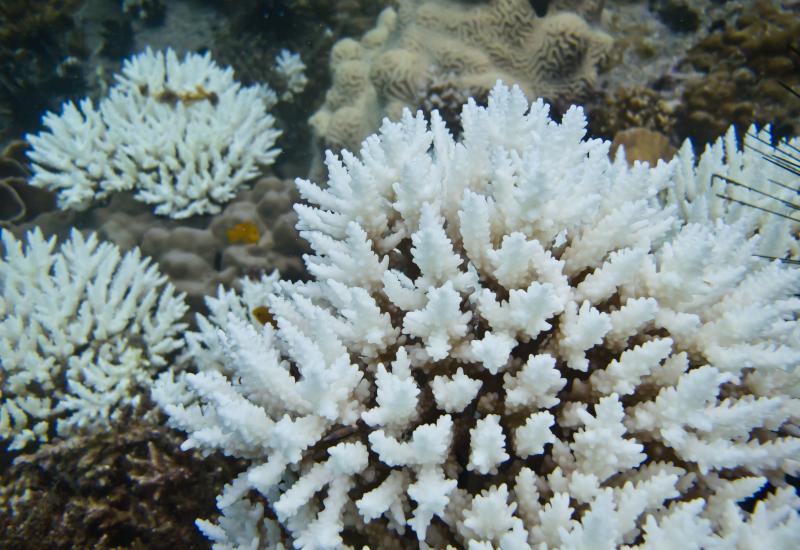Critter Hunt: Gobies and Shrimp Work Together

Goby and shrimp
Ned and Anna DeLoach
Marine life flocks to reefs for the security of hiding holes. Once established, many small fishes spend their entire lives only a tail thrust away from a protective haven. However, the sand halos encircling reefs promise an abundance of food, but offer few places to hide. What’s a little fish to do?
About 70 species of gobies, primarily from the Indo-Pacific, have solved the dilemma by teaming up with nearsighted, burrow building snapping shrimp. The high-strung gobies spend their day near entranceways keeping their eyes peeled for roving predators, such as jacks and lizardfish, while the perpetually hard-working shrimp bulldoze sand into the open from the burrow below.
The teams have established a time-honored protocol: When the bleary-eyed shrimp appears above ground they keep at least one antennae in contact with their burrow mate. Warning signals range from a twitch of the tail signifying caution to a thrash sending everyone underground in a matter of milliseconds. But even in panic decorum reigns—the shrimp are always allowed to enter the burrow first.
Because of the gobies’ vigilant nature pairs take a bit of time to approach, but it is worth the effort to watch the robotlike shrimp moving pile after pile of shifting sand and hoisting shell fragments twice their size in a never-ending quest to keep the openings to their underground bunkers clear of debris. All the while, the gobies, keep their end of the bargain, perched on furrows watching the world go by.

Ned and Anna DeLoach
Marine life flocks to reefs for the security of hiding holes. Once established, many small fishes spend their entire lives only a tail thrust away from a protective haven. However, the sand halos encircling reefs promise an abundance of food, but offer few places to hide. What’s a little fish to do?
About 70 species of gobies, primarily from the Indo-Pacific, have solved the dilemma by teaming up with nearsighted, burrow building snapping shrimp. The high-strung gobies spend their day near entranceways keeping their eyes peeled for roving predators, such as jacks and lizardfish, while the perpetually hard-working shrimp bulldoze sand into the open from the burrow below.
The teams have established a time-honored protocol: When the bleary-eyed shrimp appears above ground they keep at least one antennae in contact with their burrow mate. Warning signals range from a twitch of the tail signifying caution to a thrash sending everyone underground in a matter of milliseconds. But even in panic decorum reigns—the shrimp are always allowed to enter the burrow first.
Because of the gobies’ vigilant nature pairs take a bit of time to approach, but it is worth the effort to watch the robotlike shrimp moving pile after pile of shifting sand and hoisting shell fragments twice their size in a never-ending quest to keep the openings to their underground bunkers clear of debris. All the while, the gobies, keep their end of the bargain, perched on furrows watching the world go by.










